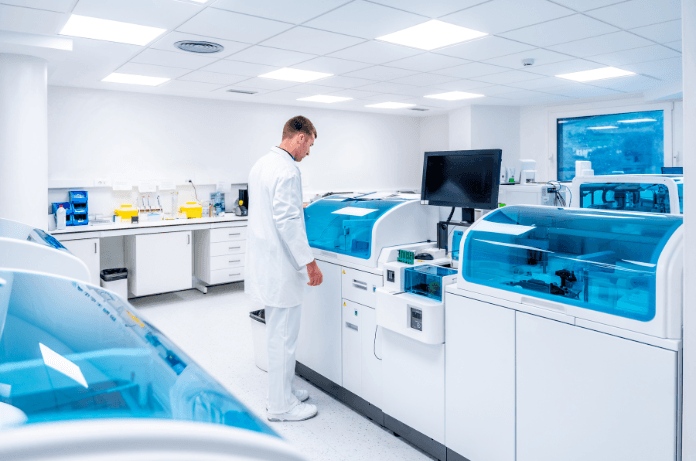In a groundbreaking development, a team of engineers and biologists at Washington State University (WSU), including Colin Greeley and Lawrence Holder, has created an artificial intelligence (AI) model capable of diagnosing diseases by analyzing human tissue images. This cutting-edge technology surpasses human expertise in both speed and accuracy, marking a significant milestone in medical research and diagnostics. The innovative system leverages scalable deep learning to identify diseases by analyzing histopathology images to give quick and accurate results. With its potential to dramatically accelerate the pace of disease diagnosis and research, this model is a game-changer for healthcare.
The Challenges of Histopathology Diagnostics
Histopathology, the microscopic examination of tissue to study disease, has long posed challenges due to its complexity. The intersection of AI, computer vision, and medical science is crucial for developing reliable models, but integrating these fields has been a significant hurdle.
One of the biggest obstacles is the sheer size and complexity of gigapixel images used in diagnostics. These high-resolution images contain intricate tissue structures, making it labor-intensive for human pathologists to identify disease markers. The process often requires multiple professionals to analyze and annotate slides, followed by further review to minimize errors, a time-consuming approach that limits real-time applications.
This is where the new AI system by WSU stands out. By overcoming these challenges, it offers a faster, more accurate alternative to traditional diagnostic methods.
How the AI Model Works
Dual-Component Architecture
The AI system relies on two main components: Data preparation and the Deep learning model.
- Data Preparation: Researchers utilized a sliding window technique to scan images at multiple resolutions, dividing them into smaller subsections for detailed analysis. This approach ensures that no critical detail is overlooked.
- Deep Learning Model: The model was trained using images from past epigenetic studies conducted by Michael Skinner’s laboratory. These images included tissue samples from the kidneys, testes, and ovaries of rodents, all exhibiting signs of disease.
To enhance its diagnostic capabilities, the team supplemented the system with additional gigapixel images, such as breast cancer and lymph node metastasis samples.
Backpropagation: Learning from Mistakes
A key feature of this AI model is its backpropagation capability, allowing it to learn from errors, correct them, and continuously improve its accuracy. This iterative learning process not only increases the model’s reliability but also significantly reduces diagnostic time—from nearly a year with traditional methods to just a few weeks.
“By integrating backpropagation and other advanced techniques, we have developed a system that’s faster and more accurate than humans,” said Lawrence Holder, co-author of the study.
Exceptional Performance and Real-World Applications
During testing, the AI system demonstrated remarkable efficiency, even outperforming previous models. It successfully identified pathologies that human experts had missed, showcasing its potential as a revolutionary tool in healthcare.
One notable application of the model is its ability to analyze gigapixel histopathology slides, which are notoriously difficult for humans to process. As per Holder, “We now have a way to identify disease and tissue faster and more accurately than ever before.”
“This AI-based deep learning program was very, very accurate at looking at these tissues,” said Michael Skinner, a WSU biologist and co-corresponding author on the paper. “It could revolutionize this type of medicine for both animals and humans, essentially better facilitating these kinds of analysis.”
Features That Set This AI Apart
Handling Gigapixel Images with Ease
The system integrates billions of pixels to process high-resolution images effectively. By analyzing small subsections (tiles) and placing them in the context of larger tissue sections, it ensures comprehensive diagnostic accuracy.
Applications in Diverse Tissues
The AI was trained on a variety of tissue types, including kidney, ovarian, and prostate samples from rodents. Researchers further expanded its capabilities by incorporating images of breast cancer and lymph node metastasis, broadening its diagnostic scope.
Durability and Scalability
The sliding window approach, combined with deep learning, allows the model to scale for larger datasets without compromising accuracy. This makes it a viable solution for real-world medical applications, from research labs to clinical diagnostics.
A Bright Future for AI in Healthcare
This innovative AI system exemplifies the growing role of technology in transforming healthcare. By merging expertise from fields like computer science, biology, and medicine, researchers are paving the way for more efficient, accurate, and accessible diagnostic solutions.
“Before these modern systems, analyzing tissues required multiple trained professionals to annotate slides, with additional checks by pathologists to reduce errors,” said Colin Greeley, lead computer scientist on the project. “Now, our AI model handles the entire process with unmatched speed and precision.”
The potential applications of this technology extend beyond disease diagnosis. It could be used for drug discovery, personalized medicine, and even preventive healthcare, offering a holistic solution to modern medical challenges.
The Future is Now
The AI-powered disease detection model developed by Washington State University is not just a technological breakthrough, it’s a leap toward a more efficient and accurate future in healthcare. By reducing diagnostic times from months to weeks, overcoming human capital challenges, and giving precision results. This system holds immense promise for revolutionizing medical research and clinical practices.

